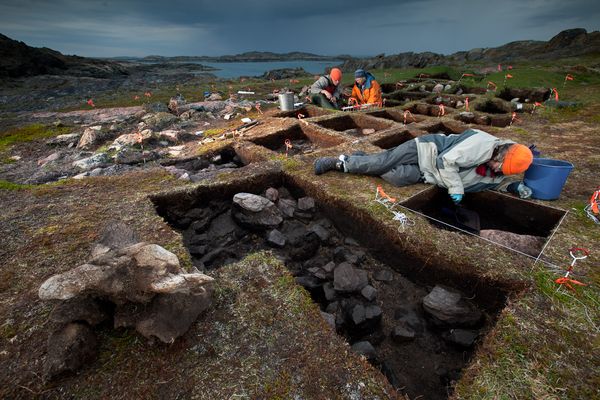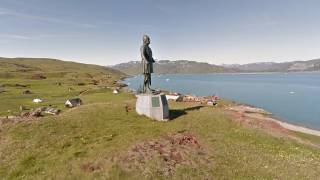Evidence of Viking Outpost Found in Canada
Source: news.nationalgeographic.com
Sharpeners may be smoking guns in quest for New World’s second Viking site.For the past 50 years—since the discovery of a thousand-year-old Viking way station in Newfoundland—archaeologists and amateur historians have combed North America’s east coast searching for traces of Viking visitors.
It has been a long, fruitless quest, littered with bizarre claims and embarrassing failures. But at a conference in Canada earlier this month, archaeologist Patricia Sutherland announced new evidence that points strongly to the discovery of the second Viking outpost ever discovered in the Americas.

Archaeologist Patricia Sutherland (orange jacket) excavates a potential Viking site on Baffin Island.
While digging in the ruins of a centuries-old building on Baffin Island (map), far above the Arctic Circle, a team led by Sutherland, adjunct professor of archaeology at Memorial University in Newfoundland and a research fellow at the University of Aberdeen in Scotland, found some very intriguing whetstones. Wear grooves in the blade-sharpening tools bear traces of copper alloys such as bronze—materials known to have been made by Viking metalsmiths but unknown among the Arctic’s native inhabitants.
 Taken together with her earlier discoveries, Sutherland’s new findings further strengthen the case for a Viking camp on Baffin Island. "While her evidence was compelling before, I find it convincing now," said James Tuck, professor emeritus of archaeology, also at Memorial University.
Taken together with her earlier discoveries, Sutherland’s new findings further strengthen the case for a Viking camp on Baffin Island. "While her evidence was compelling before, I find it convincing now," said James Tuck, professor emeritus of archaeology, also at Memorial University.Archaeologists have long known that Viking seafarers set sail for the New World around A.D. 1000. A popular Icelandic saga tells of the exploits of Leif Eriksson, a Viking chieftain from Greenland who sailed westward to seek his fortune. According to the saga, Eriksson stopped long enough on Baffin Island to walk the coast—named Helluland, an Old Norse word meaning "stone-slab land"—before heading south to a place he called Vinland.
In the 1960s two Norwegian researchers, Helge Ingstad and Anne Stine Ingstad, discovered and excavated the Viking base camp at L’Anse aux Meadows (map) on the northern tip of Newfoundland—the first confirmed Viking outpost in the Americas. Dated to between 989 and 1020, the camp boasted three Viking halls, as well as an assortment of huts for weaving, ironworking, and ship repair.
Viking Yarn
As reported in the November issue of National Geographic magazine, Sutherland first caught wind of another possible Viking way station in 1999, when she spotted two unusual pieces of cord that had been excavated from a Baffin Island site by an earlier archaeologist and stored at the Canadian Museum of Civilization in Gatineau, Quebec.
Sutherland noticed that the strands bore little resemblance to the animal sinew Arctic hunters twisted into cordage. The cords turned out to be expertly woven Viking yarn, identical in technique to yarn produced by Viking women living in Greenland in the 14th century.
[...]
Read the full article at: nationalgeographic.com
Vikings and Native Americans: Face-to-Face






















